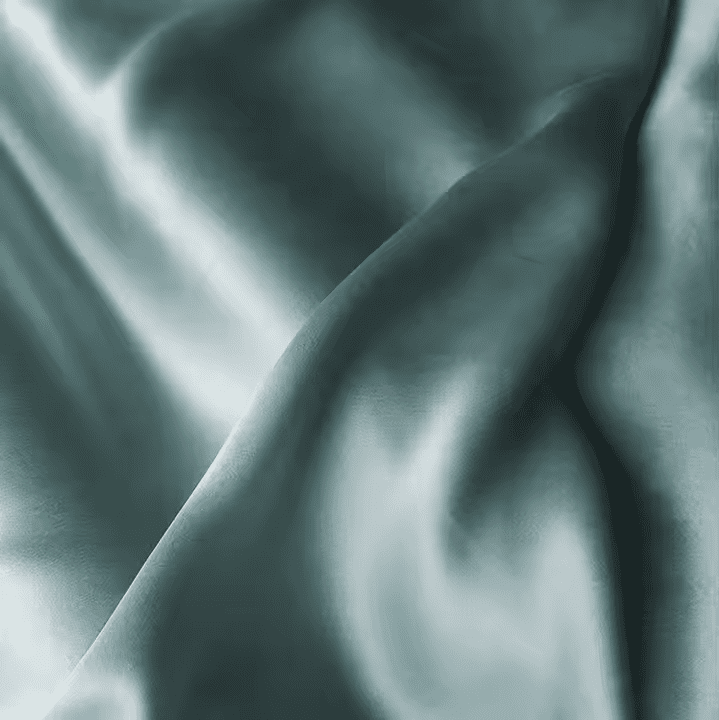Silk Fabric – Where Timeless Elegance Meets Modern Craftsmanship
At Szoneier Fabrics, we transform nature’s finest fibers into luxurious silk textiles tailored to your creative vision. For centuries, silk has been synonymous with sophistication—its natural sheen, breathable softness, and unparalleled drape making it the ultimate choice for high-end fashion, delicate lingerie, and refined home décor.
Your Design, Perfected in Silk
Whether you seek the fluidity of chiffon, the luster of satin, or the intricate detail of jacquard, our expertise turns concepts into reality. Customize weight, weave, finish, or embellishments—all with rapid prototyping and low MOQs to match your brand’s needs.
Why Choose Szoneier for Silk?
100% Quality Assurance – Premium mulberry silk with consistent durability and colorfastness.
End-to-End Customization – From digital prints to eco-friendly dyes, we adapt to your specifications.
Fast & Flexible – Free samples, short lead times, and scalable production for startups to luxury brands.
Elevate your collection with silk that balances heritage craftsmanship and innovative precision. Just share your idea—we’ll weave the magic.
You just choose wholesale any Silk Fabric types for your customization, and we will take care of the rest.
Selecting the perfect fabric for your product line has never been easier! As a top rated fabric manufacturer, we offer a wide variety of wholesale Cotton fabrics that can be customized to suit your exact needs. Whether you’re looking for lightweight cotton for clothing, durable options for bags, or specialized fabrics with water-resistant or UV-protective coatings, we’ve got you covered. With endless options in colors, textures, and finishes, our fabrics are perfect for fashion, home textiles, outdoor gear, and more. Partner with us to bring your ideas to life with high-quality materials, competitive prices, and flexible customization options.

Bamboo Silk Fabric

Crushed Spandex Silk Fabric

Floral Polyester silk fabric

Jacquard Silk Fabric
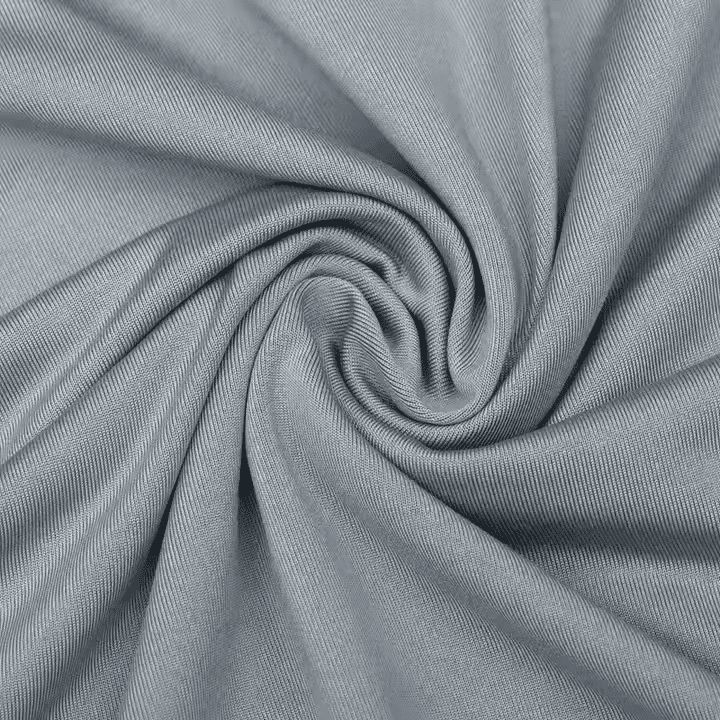
Jersey Knit Milk Silk Fabric

khadi silk fabric

Mixed Silk Fabric

modal silk fabric

Moon Bronzing Mesh Fabric

muga silk fabric

Polyester Silk Digital Print

Pure Mulberry Silk Fabric

Pure Muslin Soft Silk Fabric

shimmer silk fabric

Silk Blended Fabric

silk brocade fabric

Silk Charmeuse Satin Fabric

silk Chiffon Fabric

Silk Cotton Fabric

Silk Crepe Textiles Fabric

Silk Damask Fabric

Silk Double Georgette Fabric

Silk Dupion Fabric
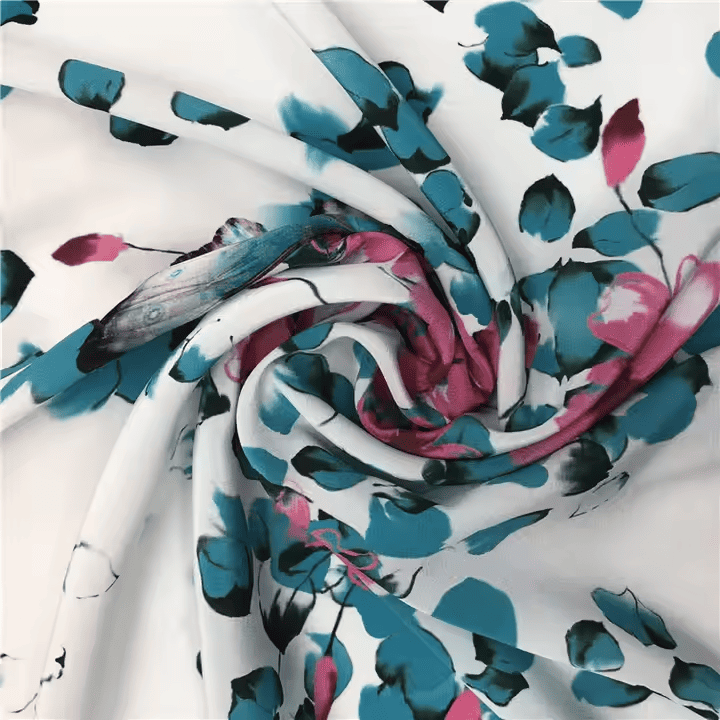
silk ikat fabric

Silk Like Taffeta Fabric

Silk Linen Blend Fabric

Silk Lining Fabric

silk organza fabric

Silk Saree Embroidery Fabric

Silk Stain shinny Fabric

Silk Tissue Fabric

Silk Velvet Fabric
Wholesale and Custom Fabric Categories
Renowned for its waterproof insulation, flexibility, and durability, neoprene fabric is a go-to material for performance-driven solutions.
Potential applications of neoprene fabric










Fashion Apparel
Silk fabric has long been a symbol of elegance and luxury in the fashion world. Its smooth texture, natural sheen, and fluid drape make it the preferred choice for high-end garments, including dresses, blouses, and evening gowns. The breathable and lightweight qualities of silk ensure comfort while maintaining an opulent appearance. Whether used in flowing maxi dresses or tailored silk blazers, it adds a touch of sophistication to any outfit. Designers favor silk for its versatility, allowing for intricate patterns, vibrant colors, and delicate embellishments. Choose silk apparel to make a bold fashion statement that exudes grace and timeless style.

Wedding and Bridal Wear
Silk is the quintessential fabric for bridal wear, offering a graceful, luxurious appeal that enhances the beauty of any bride. Its natural shimmer and sumptuous feel make it ideal for crafting wedding gowns, veils, and bridesmaid dresses. From classic A-line silhouettes to intricate lace overlays, silk creates an ethereal and romantic look, perfect for the most memorable day of a lifetime. Brides adore its breathable quality and soft touch, ensuring comfort throughout the celebration. Whether adorned with beading or left simple and elegant, silk gowns make every bride feel like royalty.

Luxury Upholstery
Elevate your interiors with silk upholstery, known for its soft, smooth texture and unmistakable luster. Silk-covered sofas, armchairs, and decorative pillows add a touch of opulence to living spaces. The fabric’s vibrant colors and intricate patterns enrich the room’s visual appeal, while its natural strength ensures lasting beauty. Though often associated with luxury, silk’s durability when blended with other fibers makes it suitable for both modern and classic settings. Enhance your home’s aesthetic with the unparalleled elegance of silk furnishings.
Why Partner With Your Trusted Silk Fabric Manufacturer For Your Bespoke Products Needs?
At Szoneier Fabrics, we don’t just supply silk—we craft luxury with precision to bring your unique designs to life. With decades of expertise in silk innovation, we empower designers and brands to create standout collections with unmatched quality and flexibility.
Your Vision, Our Mastery
Customization Without Limits – Choose from a spectrum of silk varieties (charmeuse, organza, crepe de chine) or let us develop a fully bespoke weave, weight, or finish.
Small Batch to Bulk Excellence – Low MOQs and fast turnaround, whether sampling or full production.
Sustainable Luxury – OEKO-TEX® compliant dyes and eco-conscious processes for responsible elegance.
The Szoneier Advantage
✔ Free Design & Sampling – Test ideas risk-free with complimentary prototypes.
✔ Quality Guaranteed – From fiber to finish, every meter meets premium standards.
✔ Speed Meets Craft – Agile production without compromising the artistry of silk.
For designers who demand luxury that performs, Szoneier is your end-to-end partner. Let’s create something extraordinary—start with a free sample today.
Fabric Dyeing And Finishing Process
The fabric dyeing and finishing process is a crucial phase in textile manufacturing, transforming raw materials into vibrant, functional textiles. This process not only enhances the aesthetic appeal of the fabric but also improves its durability and usability
Dyeing
Dyeing is the process of adding color to fabric. Different dyeing techniques can be used depending on the type of fabric and the desired outcome: Fiber Dyeing: Color is applied directly to the fibers before they are spun into yarn. This method is often used for wool and silk and allows for rich, deep colors. Yarn Dyeing: The yarn is dyed before weaving into fabric. This technique is ideal for patterns like stripes or plaids and is commonly used for cotton fabrics. Piece Dyeing: In this method, the fabric is dyed after it has been woven. It is the most common method used for bulk production of colored fabrics. Batch Dyeing: Fabric is dyed in large batches, ensuring consistency in color across large quantities.
Printing
Printing adds intricate designs to fabric using various methods. The most common printing techniques include: Screen Printing: A stencil is created for each color, and dye is pushed through a mesh screen onto the fabric. This method is ideal for bold, vivid designs and is widely used for T-shirts and home textiles. Digital Printing: This modern technique uses inkjet technology to print designs directly onto fabric. It allows for high detail and quick turnaround times, making it perfect for custom designs. Rotary Screen Printing: Similar to screen printing but uses a cylindrical screen for continuous printing, making it efficient for large runs.
Coating
Coating involves applying a layer of material to the fabric to enhance its properties. This can include: Waterproofing: Fabrics are coated with a water-repellent finish to protect against moisture. This is commonly used for outdoor gear and clothing. Flame Resistance: Fabrics can be coated with fire-retardant chemicals to meet safety standards for specific applications, such as upholstery and workwear. Stain Resistance: A coating can be applied to fabrics to prevent stains from setting in, making them easier to clean and maintain.
Color Weaving
Color weaving involves incorporating colored yarns into the fabric during the weaving process. This method allows for intricate patterns and designs, such as:Jacquard Weaving: Developed in the 19th century, this advanced technique employs computerized looms to independently control thousands of warp threads, enabling photorealistic imagery and elaborate motifs. Modern applications range from luxury tapestries to technical textiles with embedded smart patterns, particularly valued in high-end upholstery and narrative-driven fabric art. Twill Weave: Characterized by its signature diagonal ribbing, this method interlaces colored weft threads in staggered sequences that enhance structural integrity. The angled texture not only camouflages stains but also improves abrasion resistance, making it ideal for durable workwear, designer denim, and performance-oriented home textiles like decorative pillow covers.
Fabric Structure Types
If you need help choosing the right fabric structure for your project, feel free to reach out to our expert team for guidance!
The plain neoprene structure is the most basic and widely used form of neoprene, where the material is typically formed without any distinct texture or pattern. This simple design offers excellent flexibility, insulation, and durability. Plain neoprene is often used in wetsuits, dive suits, and protective gear due to its ability to provide thermal insulation and flexibility. The smooth surface allows for easy movement and a comfortable fit, making it suitable for water sports and outdoor activities.
1. Plain Neoprene
Open-cell neoprene features a structure where the cells within the material are interconnected, allowing air and water to pass through. This makes the fabric more breathable and flexible but less insulated compared to closed-cell options. Open-cell neoprene is commonly used in dive gear, thermal insulation for clothing, and sports braces where breathability is important. It is also often used in impact-resistant padding because of its cushioning properties.
2. Open-Cell Neoprene
In closed-cell neoprene, the material consists of cells that are not interconnected, providing a better barrier to air and water. This structure enhances insulation and buoyancy, making it ideal for wetsuits, diving suits, fishing waders, and thermal clothing used in cold-water conditions. The closed-cell structure helps keep the body warm by trapping air within the material and preventing water absorption, making it suitable for cold-water environments.
3. Closed-Cell Neoprene
Foam-filled neoprene is a variation where a layer of foam is inserted between the neoprene layers. This provides enhanced insulation and cushioning properties. Foam-filled neoprene is often used in protective gear, sports pads, and insulated clothing, offering additional shock absorption and comfort. The foam layer also improves the flexibility of the material, making it ideal for activities like kayaking, surfing, or any sport requiring impact protection.
4. Foam-Filled Neoprene
Textured neoprene features a surface with added patterns or embossing, giving it a more aesthetic and functional design. The texture can enhance grip, durability, and comfort, making it useful in sports gloves, protective knee pads, and equipment covers. The added texture also allows for better aeration, making it more comfortable for extended wear, especially in protective gear or sports apparel.
5. Textured Neoprene
Fabric Weaving Process
01
Single-Sided Fabrics
Single-sided fabrics are produced using a straight forward weaving technique where the design and texture are visible on only one side of the fabric. The reverse side often has a plain, untextured appearance. This type of fabric is commonly used in garments, linings, and home textiles, where only one side is intended to be seen. The benefits of single-sided fabrics include simplicity in design and cost-effectiveness in production. Examples include satin, which features a glossy surface on one side, and muslin, known for its lightweight and breathable qualities.
02
Knitted Fabrics
Knitted fabrics are created by interlocking loops of yarn, resulting in a flexible and stretchy material. This process allows for a variety of textures and patterns, making knitted fabrics popular in apparel, activewear, and home textiles. Knitting can be performed using different techniques, such as warp knitting and weft knitting. Warp knitting involves yarns running parallel to the fabric’s length, providing greater stability, while weft knitting has yarns woven horizontally, offering more stretch. The unique properties of knitted fabrics, such as breathability and comfort, make them ideal for casual wear and sportswear.
03
Double-Sided Fabrics
Double-sided fabrics, also known as reversible fabrics, are woven to have distinct designs or textures on both sides. This type of fabric is produced by interlacing two layers of yarn, creating a thicker and more substantial textile. Double-sided fabrics are highly versatile and can be used in a variety of applications, from fashion to upholstery. The ability to use either side of the fabric adds value and functionality, allowing designers to create reversible garments and accessories. Common examples include double-faced wool, often used in coats, and plush velvet, popular in home furnishings.
04
Weft Knitting
Weft knitting is a specific type of knitting technique where the yarn is fed horizontally across the fabric. This process creates a series of interlocking loops, resulting in a stretchy and comfortable fabric. Weft knitted fabrics are widely used in garments such as T-shirts, sweaters, and leggings due to their excellent elasticity and ability to conform to the body. Additionally, weft knitting allows for a wide range of stitch patterns, offering designers creative flexibility in their projects. The softness and drape of weft knitted fabrics make them a favorite choice in casual and activewear.
Fabric Physical Properties
Silk fabric is renowned for its unmatched softness, luxurious luster, and excellent drape. Its natural strength and durability make it resilient despite its delicate feel. Breathable and moisture-absorbent, silk remains cool and comfortable even in hot climates. While it has slight elasticity, it’s prone to wrinkling, requiring proper care to maintain its pristine appearance. Perfect for fashion and luxury textiles.
Softness
- Silk fibers are delicate and soft, with a smooth hand feel and a touch as smooth as baby skin. This softness comes from the fineness of silk fibers and their natural protein structure, making them extremely comfortable to wear next to the skin.
Luster
- Silk has a natural pearl-like luster, which comes from the reflection of light by the triangular cross-sectional structure on the fiber surface. It is this charming luster that makes silk fabrics present a noble luster and layering under the light.
Strength and Tenacity
- Although silk looks light and soft, its tensile strength is excellent. Mulberry silk, in particular, has a high tensile strength and can withstand certain tension and tearing. The strength will be slightly reduced in the wet state, but it can still maintain good durability.
Drapeability
- Silk fabrics have excellent fluidity and drape, and can naturally fit the curves of the human body and show an elegant silhouette. This feature makes it particularly popular in dresses and skirts.
Breathability and Moisture Absorption
- Silk has excellent moisture absorption and can absorb 30% of its own weight in water without getting wet. Its good breathability allows it to remain dry and comfortable in hot climates.
Elasticity and Wrinkle Resistance
- Elasticity and Wrinkle Resistance
Silk has a certain elasticity and can stretch slightly under external force without being easily deformed. However, its wrinkle resistance is relatively poor, and it is easy to form wrinkles when folded and pressed, so it needs to be properly maintained.

Fabric Printing Styles
Fabric printing is an essential aspect of textile design, allowing for the creation of unique patterns and vibrant colors that enhance the aesthetic appeal of fabrics. Various printing styles cater to different tastes and applications, providing endless possibilities for customization. Let’s explore some of the most popular fabric printing styles:
1. Intricate Printing
2. Black and White Printing
3. Botanical Prints
4. Geometric Prints
5. Knitted Jacquard
6. Abstract Prints
Fabric Dyeing and Printing
Silk fabric dyeing and printing techniques range from traditional hand methods to advanced digital printing. Acid and reactive dyeing ensure vibrant, long-lasting colors, while natural dyeing provides an eco-friendly touch. Intricate patterns and vivid hues come to life through hand, digital, and transfer printing, adding luxury and elegance to every silk creation.
Acid Dyeing
Natural Dyeing
- Natural dyes from plant, mineral or animal sources, such as plant rhizomes or insect extracts, are used. This dyeing method is environmentally friendly and has soft tones, presenting a unique natural charm, and is favored by environmentally friendly fashion brands.
Reactive Dyeing
- Reactive dyes react chemically with the amino acid groups in silk fibers to form covalent bonds, which firmly bind the dyes to the fibers. The color fastness is high, but the dyeing process is strict. It is mainly used for high-end silk products.
Digital Printing and Dyeing
- The pattern and color are directly printed on the silk surface using digital printing equipment, which has the advantages of high color reproduction and clear details. Suitable for customized design and personalized patterns, widely used in fashion apparel.
Hand Printing
- Including batik, tie-dye and hand-painted printing, each piece of fabric is a unique handicraft. This traditional craft is unique and artistic, but the production efficiency is low.
Digital Printing
- Modern printing technology can accurately control pattern details and color gradients. Suitable for complex patterns and multi-color designs such as flowers, geometric patterns and portraits, especially popular in high-end fashion.
Reactive Printing
- The use of reactive dyes for printing can form bright and washable patterns. This process ensures the durability of the printed pattern and is not easy to fade even after repeated washing.
Transfer Printing
- The pattern is transferred from paper to silk through thermal transfer technology, which can achieve complex and multi-color patterns. Suitable for mass production and rapid customization.
Fixation Treatment
- After dyeing and printing, fixation treatment is required, usually using acidic fixative or steam to ensure the color is long-lasting and stable and prevent fading during washing or friction.


Fabric Type
Silk fabric comes in various types, each with distinct characteristics. Mulberry silk is smooth and luxurious, while Tussah silk has a rustic appeal. Eri silk is eco-friendly and soft, and Muga silk boasts a rare golden sheen. Crepe de Chine and chiffon offer lightweight elegance, while taffeta and brocade provide structure and opulence.
- Mulberry Silk Mulberry silk is the most common and highest quality silk, produced by mulberry silkworms, accounting for 90% of the world’s silk production. It is smooth, soft and has a natural pearly luster, and is often used in high-end dresses, shirts and bedding.
- Tussah Silk Tussah silk is made from wild tussah silkworms. It is darker in color, usually beige or brown, and has a slightly rough texture but a natural rustic feel. This type of silk is more durable and is mostly used for scarves, home decoration and coarse fabrics.
- Eri Silk Eri Silk, also known as Peace Silk, is named because silkworms are not killed during its production process. It is milky white or light yellow, soft and elastic. Because of its environmentally friendly properties and comfortable touch, it is mostly used in scarves, shawls and light clothing.
- Muga Silk Muga Silk is produced in Assam, India. It has a natural golden luster and a tough and durable texture. Due to its rarity and luxury, it is often used in royal costumes and traditional dresses.
- Crepe de Chine Crepe de Chine has a light and matte texture, with fine wrinkles formed by strongly twisted silk fibers. It is soft and slightly elastic and is often used in shirts, skirts and summer dresses.
- Taffeta Silk Taffeta has a unique stiffness and silky surface, which can show a shiny effect under the light. Due to its tight structure and clear texture, it is often used in dresses, wedding dresses and evening gowns.
- Chiffon Silk Georgette is light, transparent, soft to the touch and has good drape. Because of its lightness and breathability, it is widely used in flowing dresses, shawls and tulle.
- Silk Brocade Brocade is silk made by jacquard technology. The surface has complex patterns and embroidery effects. It has a strong luster and is suitable for traditional dresses, costumes and luxurious decorations.
Factory Direct Wholesale Stock Cotton Fabric Styles
High-quality source manufacturers, providing bulk orders, spot and customized solutions for global retailers. Guaranteed fast delivery.

Digital Printing Silky Fabric

Mulberry Silk Fabric

Polyester Crepe Back Satin Fabric

Polyester Silk Fabric

Printed Silk Mulberry Fabric
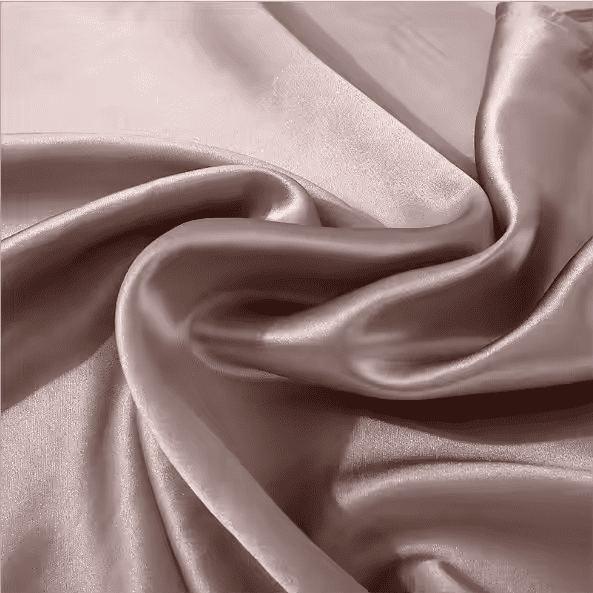
Pure Silk Charmeuse Fabric

Pure Silk Fabric

Satin Stretch Fabric

Silk Brocade Fabric

Silk Charmeuse Fabric

Silk Cotton Satin Fabric

Silk Nightwear Material Fabric

Silk Satin Material Fabric

Silk Soft Smooth Fabric

Silk Spandex Fabric
Fabric Post Treatment Processes
Fabric finishing processes play a vital role in enhancing the quality and performance of our polyester fabrics. At the Szoneier mill, we use advanced technologies to ensure that each fabric meets the highest standards of durability, softness and functionality. Our finishing processes include dyeing, finishing and coating methods that not only enhance color vividness and fade resistance, but also enhance properties such as water and stain resistance. Through the careful application of these processes, we ensure that our polyester fabrics are not only beautiful, but also meet the needs of a variety of applications. We have listed 50 processes to make them the perfect choice for your needs.
What is Pre-shrinking ?
Pre-shrinking is a process that uses physical methods to reduce the shrinkage of fabric after water immersion, thereby lowering the shrinkage rate. Mechanical pre-shrinking involves wetting the fabric with steam or mist, followed by mechanical squeezing in the warp direction, which increases the amplitude of buckling waves, and then subjecting it to relaxed drying.
What is Stretching ?
Stretching is a finishing process that utilizes the plasticity of fibers like cellulose, silk, and wool in humid conditions. By gradually expanding the fabric to a specified width, this method stabilizes its shape during drying. Known as dimensional finishing, it helps the fabric maintain its intended dimensions and improves its overall structure, reducing distortion during use.
What is Sizing ?
Sizing is a technique that involves applying a sizing solution to the fabric and subsequently drying it to enhance its stiffness and body. This process improves the fabric’s strength, making it easier to handle during manufacturing and providing a more substantial feel. Sizing also helps reduce fraying and ensures better dye absorption, resulting in improved color depth and uniformity.
What is Heat Setting ?
Heat setting is a finishing process that stabilizes thermoplastic fibers in synthetic materials like nylon and polyester, preventing shrinkage or deformation. By applying controlled heat and pressure, it maintains the fabric’s dimensions and enhances stability, improving durability and providing a firmer hand feel for better quality and performance in various applications.
What is Whitening ?
Whitening enhances the brightness and whiteness of textiles using complementary colors. Techniques include blue tinting, which adds a subtle blue hue to reduce yellowing, and fluorescent whitening, which uses optical brighteners to reflect more light. These methods improve the fabric’s appearance, making it look cleaner and more vibrant.
What is Calendering, Electric Calendering, and Embossing ?
Calendering is a process that flattens fabric surfaces and creates patterns using heat and humidity to enhance luster. Flat calendering employs hard and soft rollers for a smooth finish, while soft calendering uses two soft rollers for a gentler gloss. Electric calendering utilizes heated rollers, and embossing adds patterns with engraved steel rollers, resulting in a lustrous look.
What is Napping ?
Napping is a finishing process that employs abrasive rollers or belts to raise a layer of short, dense fibers on the fabric’s surface. This brushing technique produces a plush nap, enhancing both the warp and weft yarns. The result is a soft, textured fabric that feels warm and inviting, making it ideal for clothing, blankets, and upholstery while improving its aesthetic appeal.
What is Raising ?
Raising is the process of lifting fibers from the surface of the fabric using dense needles or pricking, creating a layer of pile, also known as pile raising. This technique is primarily applied to coarse wool fabrics, acrylic fabrics, and cotton fabrics. The resulting pile layer enhances the fabric’s warmth, improves appearance, and provides a soft hand feel.
What is Shearing ?
Shearing is a process that removes unwanted fuzz from the fabric surface using a shearing machine. Its purpose is to clarify the fabric weave, achieve a smooth surface, or ensure an even finish on raised or fuzzy fabrics. Common products requiring shearing include wool fabrics, velvet, faux fur, and carpets.
What is Softening ?
Softening can be achieved through mechanical or chemical means. Mechanical softening involves multiple rubbing and bending actions on the fabric, but the resulting softness may not be ideal. Chemical softening involves applying softening agents to the fabric, reducing the friction coefficient between fibers and yarns, resulting in a noticeably soft and smooth hand feel.
What is Stiffening ?
Stiffening is a process that involves coating the fabric with a sizing solution and drying it to achieve a thick and firm hand feel. This finishing method aims to improve the fabric’s hand feel by applying a solution made from natural or synthetic polymers with certain viscosity, forming a thin film on the fabric that imparts smoothness, firmness, thickness, and fullness, while also enhancing the fabric’s strength and abrasion resistance.
What is Liquid Ammonia Treatment ?
Liquid ammonia treatment involves processing cotton fabrics with liquid ammonia to eliminate internal stress within the fibers, improving their luster and wear performance, reducing shrinkage, and increasing resilience, tensile strength, and moisture absorption. The resulting hand feel is soft, elastic, and resistant to wrinkles, with stable dimensions.
What is Weighting ?
Weighting is a process primarily aimed at compensating for the weight loss of silk fabrics after degumming, using chemical methods to increase the weight of silk textiles. Common methods include tin weighting, tannin weighting (not suitable for white or light-colored silk fabrics), and resin weighting.
What is Lightening ?
Lightening is a finishing process that utilizes the hydrolysis of polyester in high-temperature and specific concentrations of sodium hydroxide solution to gradually dissolve the fibers, reducing the fabric’s weight (typically controlled at 20%-25%) and creating depressions on the surface that lead to diffuse light reflection, resulting in a soft sheen. At the same time, the gaps between fibers in the yarn are enlarged, creating a silk-like effect.
What is Boiling Wool ?
Boiling wool is a process that treats wool fabrics in a hot water bath under tension to flatten and stabilize them, reducing deformation during later wet processing. Primarily used for finishing worsted wool fabrics, it enhances dimensional stability and improves hand feel, preventing future wrinkling or deformation.
What is Steaming Wool ?
Steaming wool is a process that stabilizes wool fabrics through steaming under humid heat conditions, improving hand feel and luster. This technique is primarily used for wool fabrics and their blends, but can also be applied to silk and viscose fabrics. The resulting fabric is dimensionally stable, with a smooth surface and a natural sheen, as well as a soft and elastic hand feel.
What is Pressing Wool ?
Pressing wool uses mechanical pressure and humid heat to flatten the fabric, enhancing its luster and texture. Key techniques include rotary pressing, which employs steam and heated cylinders for a smooth finish (though the shine is temporary), and electric board pressing, which offers a soft sheen and crisp feel but requires bulky equipment, mainly for worsted wool fabrics.
What is Felted Wool ?
Felted wool is a process that uses the felting property of wool to create dense, thick wool fabrics and form a pile on the surface, also known as fulling. Felting improves the hand feel and appearance of the fabric while enhancing its thermal insulation. This process is especially suitable for coarse wool fabrics.
What is Anti-felting ?
Anti-felting is a finishing process aimed at preventing or reducing the shrinkage and deformation of wool fabrics during washing and wear, thereby ensuring dimensional stability in garments. This principle involves chemically treating the scales to alter their surface state or covering the surface with a polymer layer to bond fiber interlace points, effectively removing the basis for felting.
What is Wrinkle Resistance ?
Wrinkle resistance is a finishing process that modifies the original composition and structure of fibers, enhancing their resilience and making the fabric less prone to wrinkling during wear. This method is primarily used for pure or blended cellulose fibers and can also be applied to silk fabrics.
What is Crinkle Finish ?
Crinkle finish is a process that creates various irregular wrinkles on fabric. Techniques include mechanical pressing for an embossed appearance, such as hand crinkling and rope crinkling, as well as rubbing methods like liquid flow dyeing and tumbler drying. This finish is mainly applied to pure cotton, polyester/cotton blends, and polyester filament fabrics.
What is Water Repellent Finish ?
Water repellent finishing involves treating fibers with chemical water repellents to lower the surface tension, causing water droplets to not wet the surface. This process is also known as breathable waterproof finishing and is suitable for materials used in raincoats and travel bags. Based on the durability of the water repellent effect, it can be categorized as semi-durable or durable.
What is Oil Repellent Finish ?
Oil repellent finishing involves treating fabrics with oil-repellent agents to create a surface that repels oil. Fabrics that undergo oil repellent finishing are also water-repellent and possess good breathability. This technique is mainly applied to high-quality raincoats and specialized wear materials.
What is Antistatic Finish ?
Synthetic fiber fabrics can accumulate static electricity due to low moisture and high crystallinity. Antistatic finishing applies chemical agents to enhance hydrophilicity and reduce static by creating a conductive layer on hydrophobic surfaces for ionization. However, this method is generally less effective and durable than blending or interlacing conductive fibers during weaving.
What is Easy-Clean Finish ?
Easy-clean finishing simplifies dirt removal from fabric during standard washing while preventing re-accumulation. It enhances the fibers’ surface hydrophilicity, reducing surface tension between the fibers and water. When wet, the hydrophilic layer expands, creating mechanical forces that help detach dirt by applying a hydrophilic polymer layer to the fabric’s surface.
What is Mold and Mildew Resistant Finish ?
Mold and mildew resistant finishing typically involves applying chemical anti-mold agents to cellulose fiber fabrics to kill or inhibit microbial growth. To prevent textiles from molding during wet processing or in humid environments, common anti-mold agents include formaldehyde and 2-phenylphenol.
What is Flame Retardant Finish ?
Flame retardant finishing involves treating fabric surfaces with flame retardant agents to improve the fabric’s fire resistance. Common flame retardant agents include phosphoramide, ammonium phosphate, and polyvinyl chloride, all of which can reduce combustion rate and slow down flame spread.
What is Waterproof Finish ?
Waterproof finishing treats fabric surfaces with agents like fluorocarbon compounds, polyurethane, and silicone to block moisture while maintaining breathability. This finishing is applied to products such as rain gear, tents, and outdoor sportswear. Fluoropolymer coatings are commonly used, forming a barrier against water without compromising airflow.
What is Durable Press Finish ?
Durable press finishing involves applying resin finishing to cellulosic fiber fabrics to improve their crease resistance. The finishing is primarily applied to fabrics that require high durability, such as workwear and casual wear. The primary agent used in durable press finishing is DMDHEU (dimethylol
dihydroxyethyleneurea).
What is Stain-Resistant Finish ?
Stain-resistant finishing involves applying agents to the surface of fabrics to reduce dirt adhesion and enhance stain resistance. This can be achieved through methods such as chemical treatment or applying a special surface coating. Common stain-resistant agents include fluoropolymer-based finishes, which repel water and oil-based stains.
What is Antimicrobial Finish ?
Antimicrobial finishing involves applying antimicrobial agents to the surface of textiles to inhibit microbial growth, odors, and degradation caused by bacteria and fungi. Common antimicrobial agents include silver ions, quaternary ammonium compounds, and organic biocides. This finishing technique is widely used in medical textiles, activewear, and home textiles.
What is Coating ?
Coating is a finishing process where a layer of polymer material is applied to the surface of the fabric, forming a barrier against water and other external factors. This process can also provide additional properties such as breathability and UV protection. Coatings can be applied using methods such as knife-over-roll or rotary screen printing.
What is Gluing ?
Gluing is a finishing process that utilizes adhesive materials to bond fabric layers or attach various components, such as linings and interlinings. This technique is commonly used in the production of garments and upholstery, providing structural integrity and durability to the final product.
What is Laminating ?
Laminating involves bonding two or more layers of fabric together using heat, pressure, or adhesives to create a composite material with enhanced properties. This process can improve the fabric’s strength, durability, and weather resistance, making it suitable for a variety of applications such as outdoor gear, footwear, and protective clothing.
What is Compounding ?
Compounding is a finishing process that combines different materials, such as rubber, plastic, or textile fibers, to create a composite material with specific performance characteristics. This technique is often used in the production of high-performance textiles, such as those used in automotive or industrial applications.
What is Composite ?
Composite finishing involves combining different textile materials or layers to enhance the overall performance of the fabric. This technique is commonly used in technical textiles, where multiple layers are bonded to achieve specific properties such as strength, breathability, and insulation.
What is Sanding ?
Sanding is a finishing process that involves abrading the surface of the fabric to create a soft, velvety texture. This technique is often applied to cotton and polyester fabrics, resulting in a luxurious hand feel and enhancing the fabric’s aesthetic appeal.
What is Brushing ?
Brushing is a finishing process that lifts and opens the surface fibers of the fabric, creating a soft and fuzzy texture. This technique is commonly used on fabrics like fleece and flannel, providing a cozy hand feel and enhancing warmth.
What is Crimping ?
Crimping is a process that imparts a wave or crinkle effect to fibers or fabrics, enhancing their texture and appearance. This technique is often used in synthetic fibers to improve their elasticity and resilience.
What is Thickening ?
Thickening is a finishing process that involves adding a thickening agent to the fabric, enhancing its texture and weight. This technique is commonly used in heavy-duty textiles, such as canvas and denim, to improve durability and performance.
What is Pilling Resistance ?
Pilling resistance is a finishing process that enhances the fabric’s ability to resist the formation of pills or small balls of fibers on the surface. This technique is especially important for fabrics that are subject to frequent abrasion, such as knitwear and upholstery.
What is Color Fastness ?
Color fastness finishing involves treatments that enhance the fabric’s ability to retain its color and resist fading during washing and exposure to sunlight. This technique is essential for ensuring the longevity of dyed textiles and is commonly applied to garments and home textiles.
What is Lightfastness ?
Lightfastness finishing involves applying treatments that protect the fabric from fading or discoloration due to exposure to light. This process is particularly important for outdoor textiles and fabrics used in window treatments, ensuring that they maintain their original appearance over time.
What is Thermal Insulation ?
Thermal insulation finishing involves treatments that enhance the fabric’s ability to retain heat, providing warmth and comfort in cold conditions. This technique is commonly used in outerwear and bedding, utilizing materials such as down or synthetic insulation.
What is UV Protection ?
UV protection finishing involves treatments that enhance the fabric’s ability to block harmful ultraviolet (UV) radiation from the sun. This process is essential for outdoor textiles, such as swimwear and sun protective clothing, ensuring that they provide adequate protection against sun damage.
What is Antibacterial Finish ?
Antibacterial finishing involves applying treatments to the fabric that inhibit the growth of bacteria, preventing odors and degradation. This technique is commonly used in activewear and medical textiles, providing added hygiene and freshness.
What is Odor Control ?
Odor control finishing involves treatments that reduce or eliminate odors in fabrics, enhancing their freshness and wearability. This process is often applied to activewear and home textiles, utilizing antimicrobial agents and odor-absorbing materials.
What is Flame Resistant Finish ?
Flame resistant finishing involves applying treatments to fabrics that enhance their ability to resist ignition and slow down the spread of flames. This process is crucial for protective clothing and upholstery in environments where fire hazards are present.
What is Reinforcement ?
Reinforcement finishing involves adding extra layers or materials to enhance the strength and durability of fabrics. This technique is commonly used in workwear, outdoor gear, and upholstery, ensuring that textiles can withstand wear and tear.
What is Environmental Finishing ?
Environmental finishing involves applying treatments and processes that minimize the environmental impact of textiles, such as using eco-friendly dyes and finishes, reducing water and energy consumption, and implementing recycling practices.
Free Pantone Color Choice
For all your polyester fabric customization needs, we offer a free Pantone color selection to ensure your products reflect your exact vision. Our extensive color chart includes a wide array of Pantone options, allowing you to select the perfect shade to match your project requirements—whether it’s for apparel, bags, outdoor gear, or home textiles. Each color category is carefully curated to include vibrant tones, soft neutrals, and everything in between, providing a diverse palette to inspire creativity.
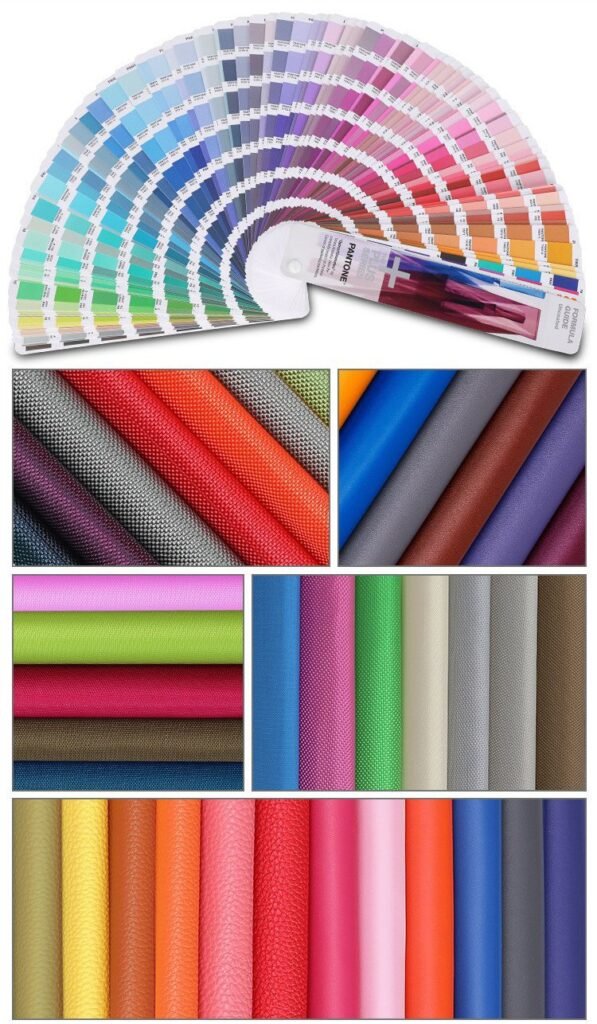
Color Categories:Our fabric color chart is divided into clear categories, making it easy for you to navigate and find your desired hues. Whether you’re searching for bold colors that stand out or subtle tones for a minimalist design, our organized color chart ensures quick selection. These categories cover a full spectrum of options, from bright and eye-catching shades to more muted and elegant tones, perfect for any polyester fabric project.
Color Swatches and Codes:Each category contains multiple swatches that display the available shades within that color family. Next to each swatch, you’ll find the Pantone color code, which ensures consistency and accuracy when placing your order. These Pantone codes serve as an industry standard, guaranteeing that the color you see on our chart is exactly what will be delivered in the fabric. This attention to detail ensures that your products maintain their visual appeal and stay true to your original design.
Custom Color Options:If our extensive standard chart doesn’t perfectly match your needs, we also offer fully customizable fabric colors. Simply provide us with your desired Pantone code or specific color samples, and our team will work with you to develop a fabric color that fits your exact vision. This option is ideal for companies looking for exclusive branding opportunities or designers aiming to create a unique and personal touch.
Digital Rendering Services:To help you visualize how your chosen fabric color will appear on your finished product, we provide digital rendering services. This allows you to preview how the selected color looks in context, whether it’s on a garment, bag, or other textile product. With this tool, you can fine-tune the color choice or make adjustments to other design elements before production begins, ensuring that your custom polyester fabric meets your expectations.
Production Process Of Fabric
At Szoneier factory, the production process of polyester fabric is a blend of advanced technology and meticulous craftsmanship. We begin with the polymerization of raw materials to create polyester fibers, which are then spun into yarn. These yarns undergo weaving or knitting to form the base fabric. To ensure top-tier quality, each stage of production is carefully monitored, from dyeing and finishing to applying special treatments like water resistance or UV protection. Our cutting-edge machinery allows us to produce fabrics in a wide range of textures and finishes, customized to meet the specific needs of your project. With our commitment to precision and excellence, you can count on durable, vibrant, and versatile polyester fabrics ready for any application.
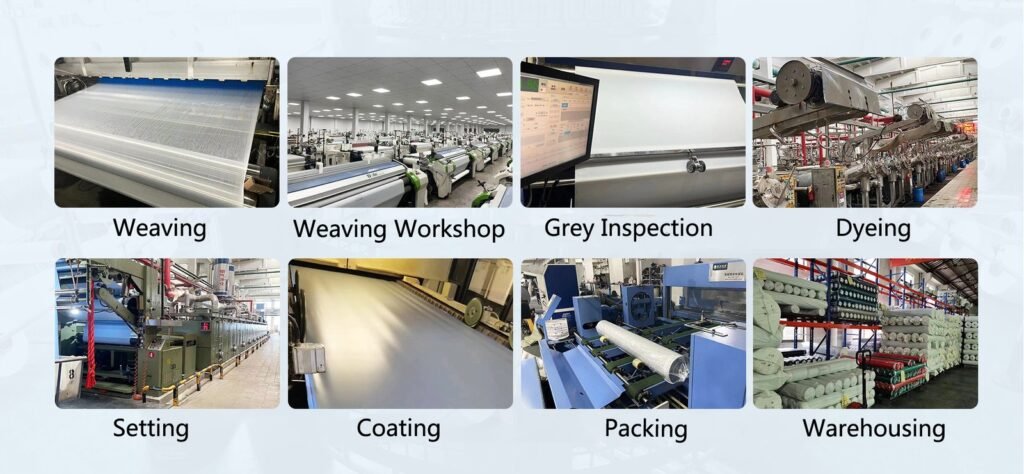
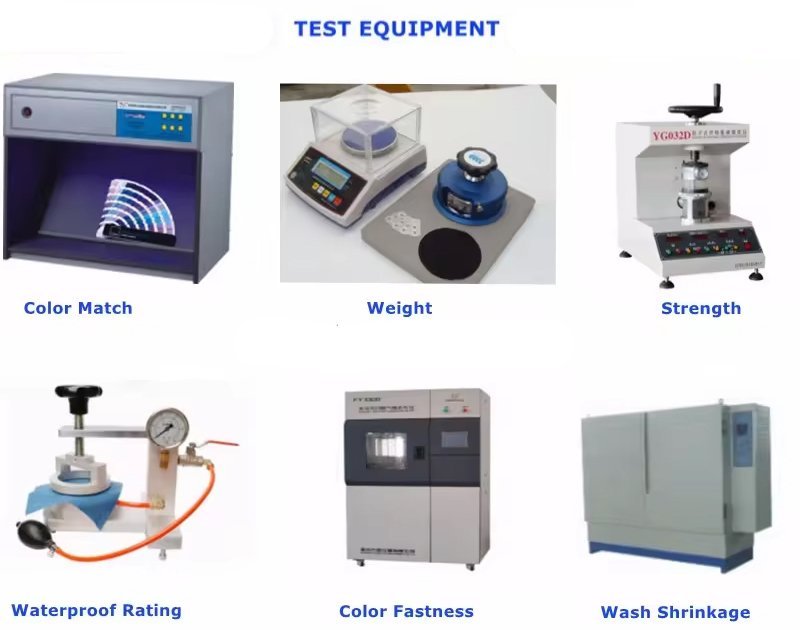
Testing Equipment Of Fabric Production
At Szoneier fabric production factory, we utilize state of the art testing equipment to ensure the highest standards of quality and durability. Our advanced machinery includes tensile strength testers, colorfastness testing equipment, abrasion resistance testers, and moisture control systems. Each piece of fabric undergoes rigorous testing for consistency, performance, and longevity, allowing us to guarantee top-quality products that meet both industry standards and customer expectations. This commitment to quality ensures fabric excellence from production to final delivery.
Make A Sample First?
Got a specific artwork, logo, or design concept in mind? We’re all ears! Share every detail—your preferred fabric type, Pantone colors, and any custom features you want. Our team will partner with you to nail your vision with precision. We’ll start by creating a fabric sample so you can touch, feel, and inspect the quality, texture, and color firsthand before committing to full production. This way, we tweak things until it’s exactly what you imagined. Let’s turn your ideas into a fabric that’s uniquely yours !
Video Of Product And Production
Get a behind the scenes look at our fabric production process with our exclusive factory video. where you can witness the fascinating journey of our polyester fabrics from raw materials to finished products. Our informative videos provide a behind-the-scenes look at the advanced techniques and skilled craftsmanship that define our manufacturing process. Whether you’re interested in the production methods or the innovative designs we offer, these videos reflect our dedication to quality and creativity in fabric development. Join us and explore the artistry of our fabric production!
Cooperating Brands Trusted
Your product is produced in reliable factory like our already cooperating international brand partners below:





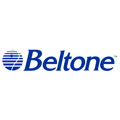





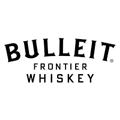
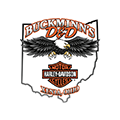





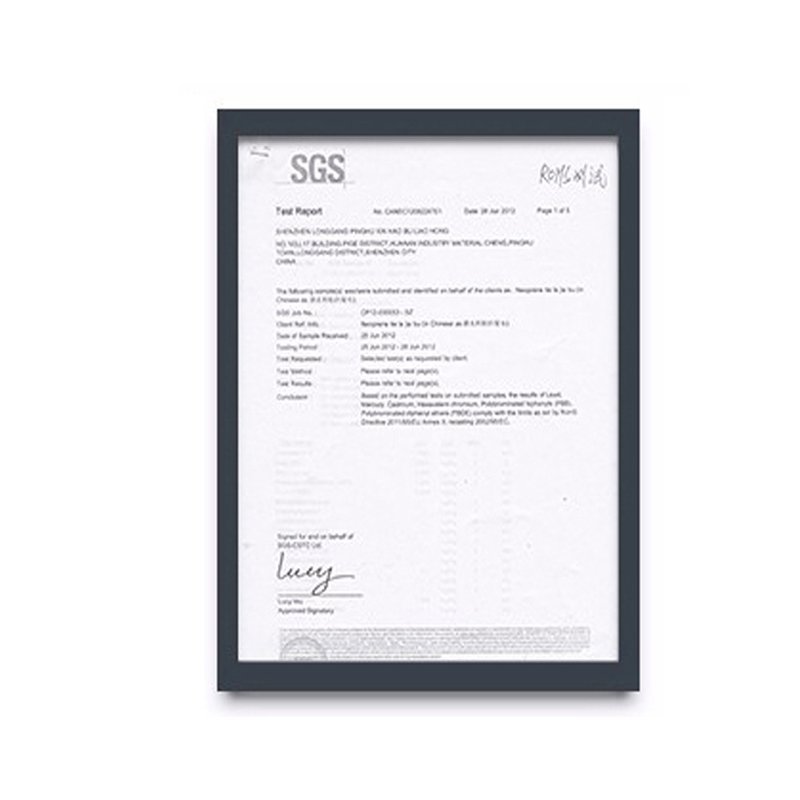
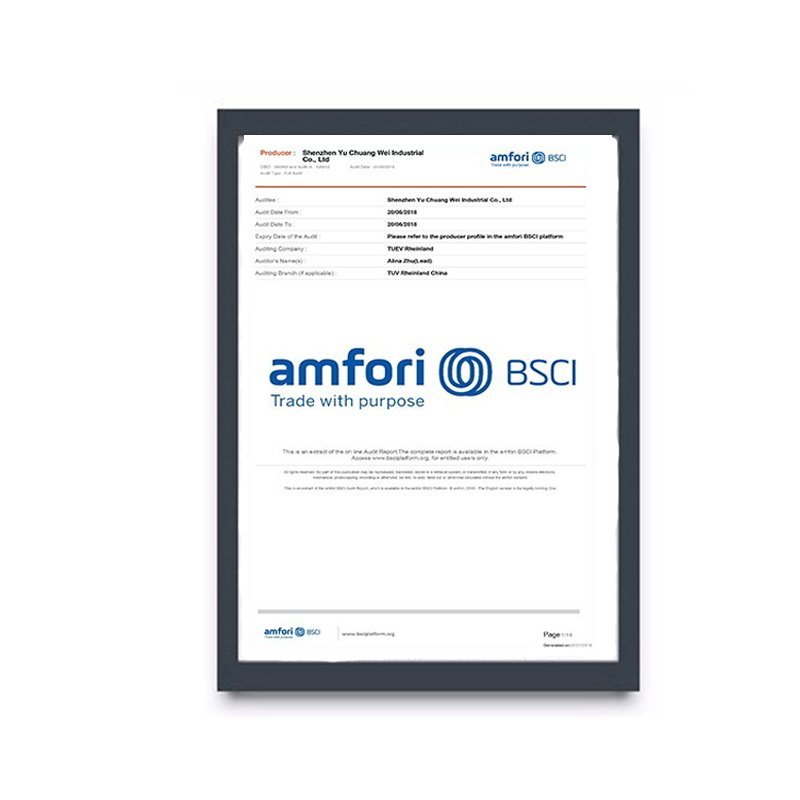
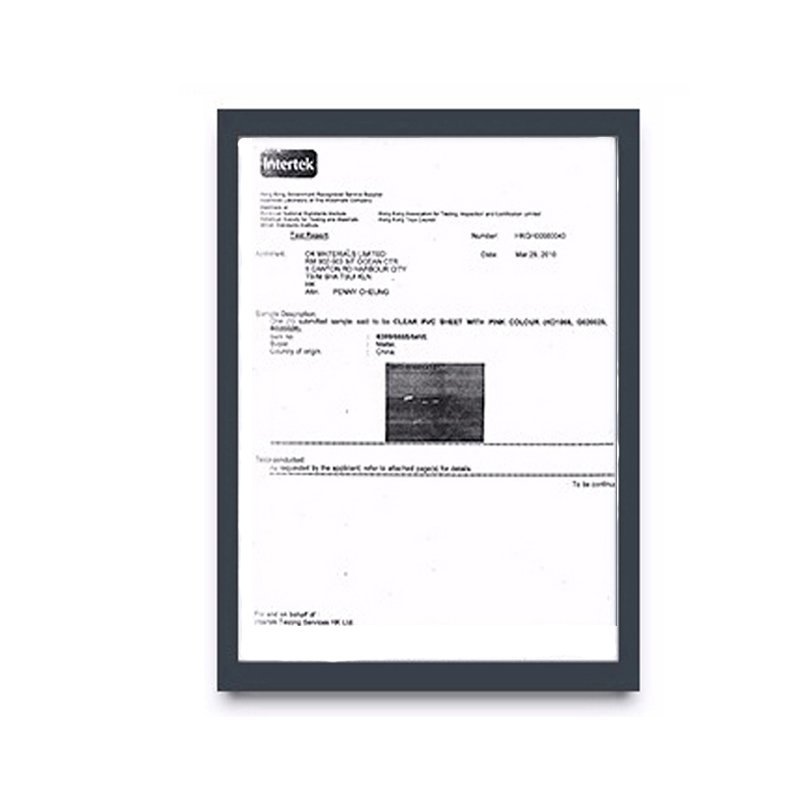

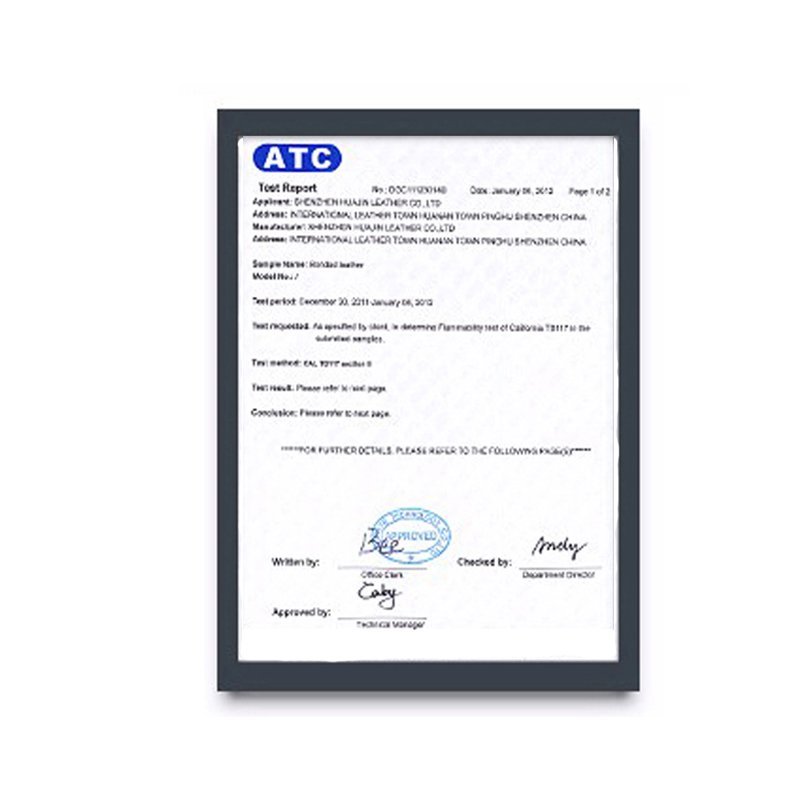
International Certification
You can totally trust us with all certifications shown below.
Silk fabric is one of the most luxurious and desirable textiles globally, renowned for its elegance and comfort. One of the primary benefits of silk is its exceptional softness and smooth texture, which feels gentle against the skin. This makes silk garments a top choice for lingerie, sleepwear, and formal attire. The natural sheen and drape of silk give it a refined and sophisticated look, making it perfect for evening gowns, scarves, and luxury home decor items.
Another advantage of silk is its breathability and moisture-wicking properties. Unlike synthetic fabrics that can trap heat and moisture, silk regulates temperature efficiently. It keeps you cool in hot weather and warm in cooler climates. This is particularly useful for bedding and sleepwear, as it enhances comfort throughout the night.
Silk is also known for being hypoallergenic, as it naturally repels dust mites, mold, and fungi. This makes it an excellent choice for people with sensitive skin or allergies. Additionally, silk fibers are strong and resilient, offering impressive durability despite their delicate appearance. With proper care, silk garments and textiles can last for many years.
Lastly, silk is a sustainable and biodegradable material. It’s produced from natural fibers spun by silkworms, and the cultivation of silk typically has a lower environmental impact compared to synthetic textiles. This makes it an ethical choice for consumers looking to reduce their carbon footprint.
Taking care of silk fabric properly is essential to maintain its natural luster and durability. Silk is a delicate material, so washing it requires extra attention. It is generally recommended to hand wash silk garments in cold water with a gentle detergent specifically formulated for delicate fabrics. Avoid using harsh chemicals or bleach, as these can damage the fibers and cause discoloration.
To clean silk properly, immerse the fabric in lukewarm water and gently agitate it for a few minutes. Never wring or twist the fabric, as this can cause creases and weaken the fibers. After washing, rinse thoroughly to remove all detergent residues.
When drying, lay the silk flat on a clean towel and gently roll it up to absorb excess water. Then, lay it flat to air dry, avoiding direct sunlight, as UV rays can fade and weaken the fabric. Never use a dryer, as the heat can cause shrinkage and damage.
If ironing is necessary, use a low heat setting and place a cloth between the iron and the silk to prevent scorching. For optimal results, iron the fabric while it is slightly damp. Alternatively, steaming is a safer option to remove wrinkles without risking damage.
For stubborn stains or professional cleaning, choose a dry cleaner experienced with silk. Always inform them of the specific fabric type to ensure proper handling. With proper care, your silk garments will remain beautiful and luxurious for years.
Silk fabric is renowned for its luxurious feel and elegant appearance, but its premium cost often raises questions. The high price of silk stems from several factors, starting with the labor-intensive production process. Silk is harvested from the cocoons of silkworms, primarily the Bombyx mori, which feed exclusively on mulberry leaves. It takes thousands of cocoons to produce just one kilogram of silk, and the harvesting process is meticulous and time-consuming.
The weaving of silk fabric also demands specialized skills and precision. Silk threads are delicate and prone to breakage, requiring expert craftsmanship to create durable and visually appealing textiles. Skilled artisans use traditional weaving techniques to produce fine silk, which adds to production costs.
Furthermore, silk is highly valued for its natural properties, such as its breathability, moisture management, and hypoallergenic nature. Unlike synthetic fabrics, silk is biodegradable and environmentally friendly, which makes it appealing to eco-conscious consumers. The combination of limited supply, labor costs, and the fabric’s unique qualities drives up its market price.
High-quality silk is often produced in limited quantities, and the luxurious nature of the material makes it a symbol of status and refinement. Investing in genuine silk means acquiring a timeless and durable fabric that justifies its cost through elegance and longevity.
Identifying genuine silk can be challenging, but there are several reliable methods to distinguish it from synthetic alternatives. One of the most effective techniques is the burn test. Take a small, inconspicuous fiber and burn it carefully. Real silk burns slowly, smells like burnt hair, and leaves a brittle ash. In contrast, synthetic fibers like polyester melt and emit a chemical odor.
Another method is the visual inspection. Real silk has a natural luster with a subtle, iridescent sheen, whereas synthetic silk tends to have a more uniform shine. Also, examine the texture—genuine silk feels smooth yet slightly uneven due to the natural fibers, while fake silk may feel overly slick or plasticky.
The touch test is also helpful. Real silk warms up quickly when rubbed between your fingers, while artificial silk remains relatively cool. You can also perform a water drop test—a drop of water on real silk is quickly absorbed, while fake silk might leave a wet patch for longer.
Lastly, checking the label and price is essential. High-quality silk is usually labeled explicitly as “100% silk” or “pure silk,” and the price often reflects its premium nature. If the price seems too good to be true, it probably is.
Silk fabric is versatile and used in various applications due to its luxurious texture and remarkable properties. One of the most popular uses is in fashion apparel, including dresses, blouses, scarves, and ties. The fabric’s elegant drape and rich appearance make it ideal for evening gowns and bridal wear. Additionally, silk’s moisture-wicking nature makes it comfortable for nightwear and lingerie.
In the realm of home textiles, silk is highly prized for bedding items such as pillowcases, sheets, and duvet covers. Its smooth surface is gentle on the skin and hair, reducing friction and helping maintain moisture balance. Additionally, silk bedding adds a touch of sophistication to any bedroom decor.
Silk is also utilized in accessories, including handkerchiefs, pocket squares, and headscarves. In the fashion industry, designers favor silk for its ability to retain vibrant colors and intricate prints. Additionally, silk is a favorite for upholstery and drapery in luxurious interiors, adding a refined touch to living spaces.
For artistic purposes, silk is used as a canvas for hand-painted art and embroidery, showcasing its ability to hold detailed patterns and vivid colors. Its natural sheen enhances the visual appeal of artworks and crafted pieces.
With its diverse applications and timeless appeal, silk fabric remains a coveted choice for fashion, home decor, and creative projects.
Frequently Asked Questions
Welcome to our FAQ section on customized nylon fabrics, where we answer your most common questions and provide insights into fabric types, customization options, features, and order-related details. Whether you’re looking to learn more about the various nylon fabric styles, specialized finishes, or the ordering process, we’re here to help. Our goal is to ensure that you have all the information needed to make informed decisions about selecting the perfect nylon fabric for your unique project.
